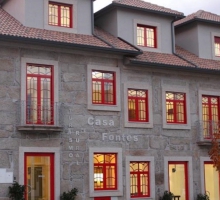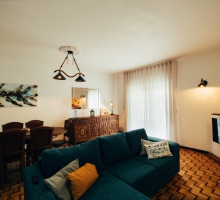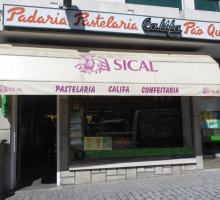This convent dates back to an ancient pre-Roman hermitage, founded in the century IX, which implementation fallowed the criteria of isolation. It lies in a narrow valley, with a difficult access and far from roads and dwellings, recorded in a beautiful landscape.
In contrast to other monasteries of the northern of Portugal, which in general are the possessors of productive hunting grounds, this first community of monks of Júnia depended on the grazing, fact that emphasized his humble and ascetic character.
The current monastery temple and its annex were built during the first half of the twelfth century, even before the founding of the nation. It was then occupied by monks of the Order of St. Benedict.
In the middle of the thirteenth century, the monastery began to follow the rule of the Cistercian Order, being added to the Abbey of Oseira in Galicia.
Over the centuries, this monastery was enriched with the acquisition of lands in the region of Galicia and in Barroso.
In the early fourteenth century, some works of maintenance and improvement were made, which highlights the construction of the cloister and the enlargement of the chancel.
In the begging of the Modern Age some works as the lifting of some dependencies of the convent and chapel of the temple were carried out, however, nowadays, destroyed by siltation caused by the brook that runs along the head of it.
In the first half of the eighteenth century, the church was restored, in terms of the timber and grinding, and redecorated with gilded altarpieces. However, since the middle of the century, it began to enter in decadency and, consequently, it lost incomes and monks.
With the extinction of male religious orders (1834), his last monk began to perform his duties as pastor of Pitões. In the second half of the century, a devastating fire caused the ruin of many monastic dependencies.
The Monastery of Santa Maria das Júnias is classified as a National Monument by Decree No. 37728 of January 5, 1950.
In 1986 the Directorate-General for National Buildings and Monuments has carried out refurbishment and improvement.
More recently, in 1994 and 1995, the National Park of Peneda-Geres promoted an archaeological intervention in the cloister and the convent kitchen.
A festive event takes place, each year, on the 15 of August, which receives people from Pitões das Júnias and surrounding villages.
Characteristics
This monastery has been organized according to a trapezoidal form, being the established church on the north side and the dependencies of the convent in the south.
The divisions of the convent, largely collapsed, comprise two bodies: the first, parallel to the creek, was the monks' dormitory. The second, which is perpendicular to the first, was located where the kitchen was located, which still retains its pyramidal stack.
The old Romanesque cloister only retains three arches of the gallery leaning against the church. Those are built as a Perfect round, based on phytomorphic decorated capitals.
The temple has a single nave and chancel which is the best preserved structure of the monastery. In front, topped by a gabled Romanesque truncated by an eighteenth-century bell tower of two eyes, a beautiful portal with round arch opens his self, with a first and a second archivolt smooth exterior, adorned with lancets, in turn surrounded by a frieze with geometric decoration.
The abacus of the arch were decorated for cordiform reasons, while the eardrum has, the lower level, a lintel decorated with stylized cruciform, flowers and above this, a Maltese cross leaked, framed by circular perforations arranged in a triangle.
On the side walls of the nave two simple portals are ripped in the stone , timpani leaked by crosses of Malta, similar to each other, and surmounted by frieze and cornice framed and driven, the half wall, a frieze decorated with geometric motifs, under which corbels are projected, also adorned by these geometric elements. The axial window shows the supremacy of the Romanesque style upon the Gothic style.
On a side window, turned to north, a curious recumbent statue of a monk is interpreted, by the population, as being a marc of the maximum quota transferred by the river over the centuries.
Inside, an ornamented frieze is preserved, which circulates the nave at the same height as the windows. The triumphal arch, of two abacuses archivolt supported by rounded off smooth, is framed by two engravings. In the chancel, a main altarpiece is disposed with an elaborated carved composition.
Location: Montalegre





